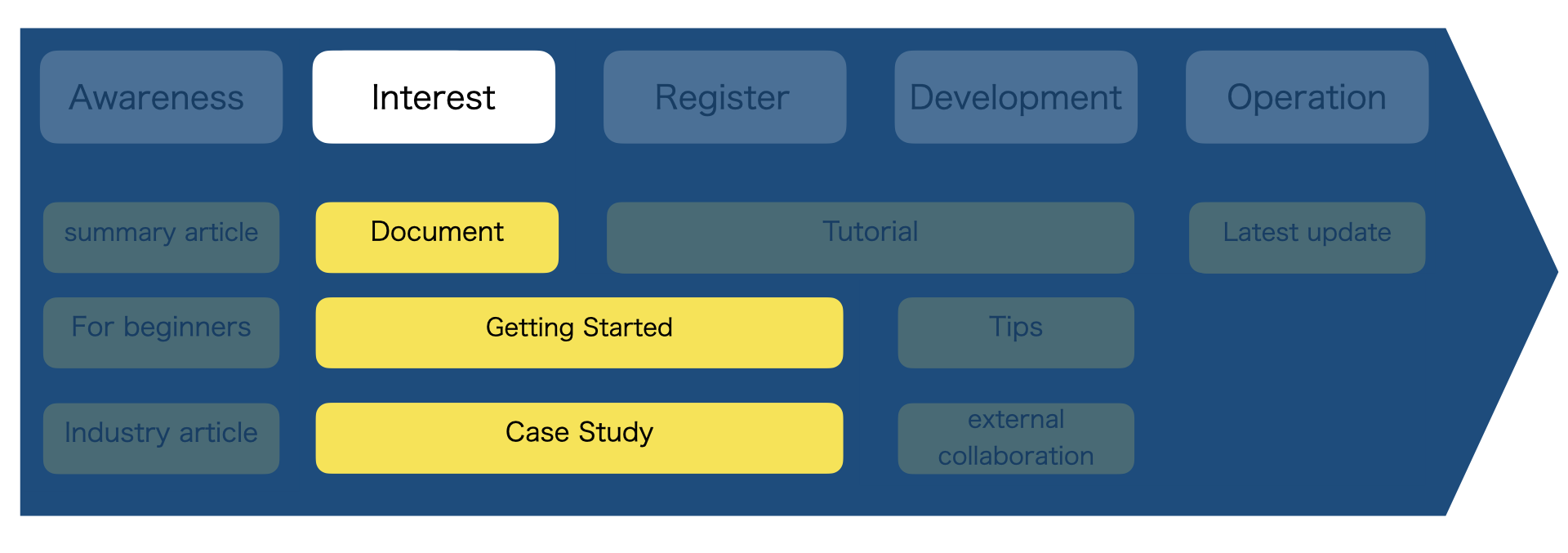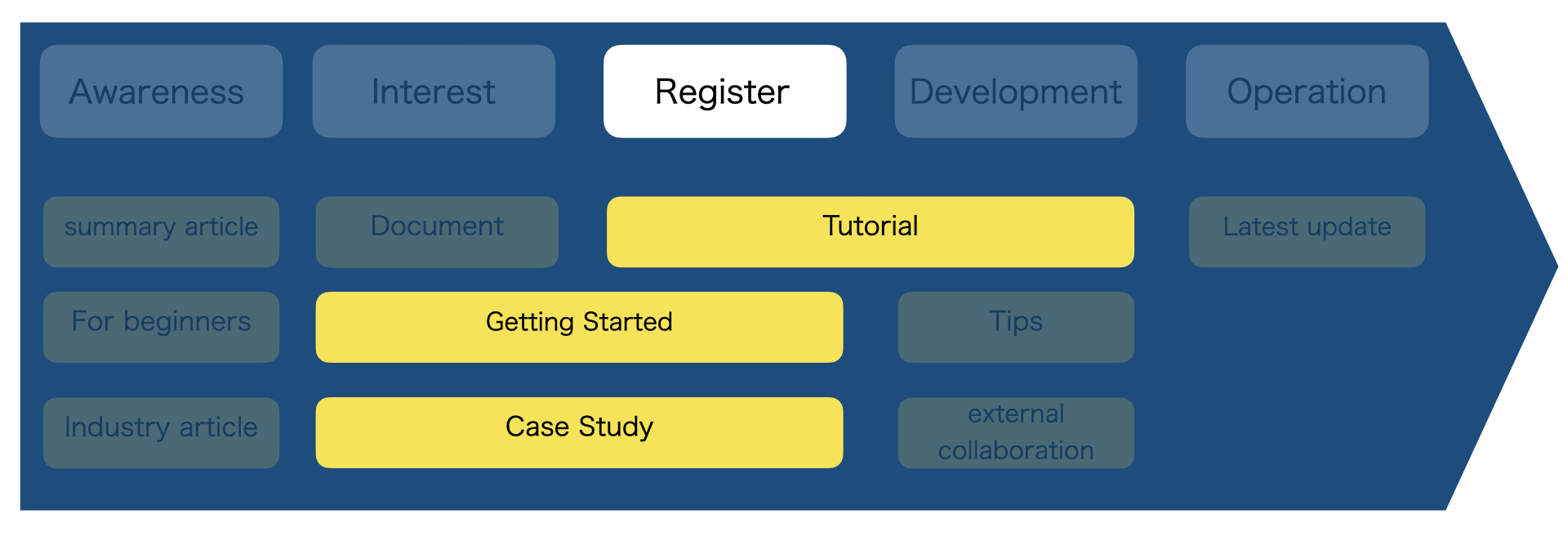
In this article, we’ll explore the “effective content” for each stage based on the AIRDO method we discussed earlier.

The premise of this stage is as follows:
And the content goal is:
There are several ways to achieve this awareness:
Content that can create these opportunities includes:
At this stage, people won’t search for your service name directly. It’s important to research their “daily challenges” and provide information that can solve these issues. By creating challenge-driven content and spreading it, you can reach the developers you’re targeting.

The premise of this stage is:
And the content goals are:
Opportunities at this stage include:
Content that can create these opportunities (excluding word of mouth and meetup conversations) includes:

This is the stage where comparison is complete (or perhaps still ongoing) and they’ve chosen your service. The premise of this stage is:
And the content goal is:
At this stage, there’s not much content can do. Important content includes:
If user registration is unclear or if users can’t start using the service immediately after registration, you’ll need supporting content. For example, if you only have English pages, it’s good to provide Japanese explanation pages for the Japanese market.

This is the phase where users have registered and started using the service. The premise of this stage is:
And the content goal is:
At this stage, users need a lot of information about the service:

This is the phase where development is complete and the developer’s released service is in operation. The premise of this stage is:
And the content goal is:
At this stage, you need content such as:
Content is necessary throughout the entire developer experience, from start to finish. By considering “effective content” for each stage based on the AIRDO method, you can provide optimal information to developers.
MOONGIFT supports your DevRel & developer marketing in the Japanese market. If you’re interested, please contact us.
You will receive news and updates about DevRel via email.